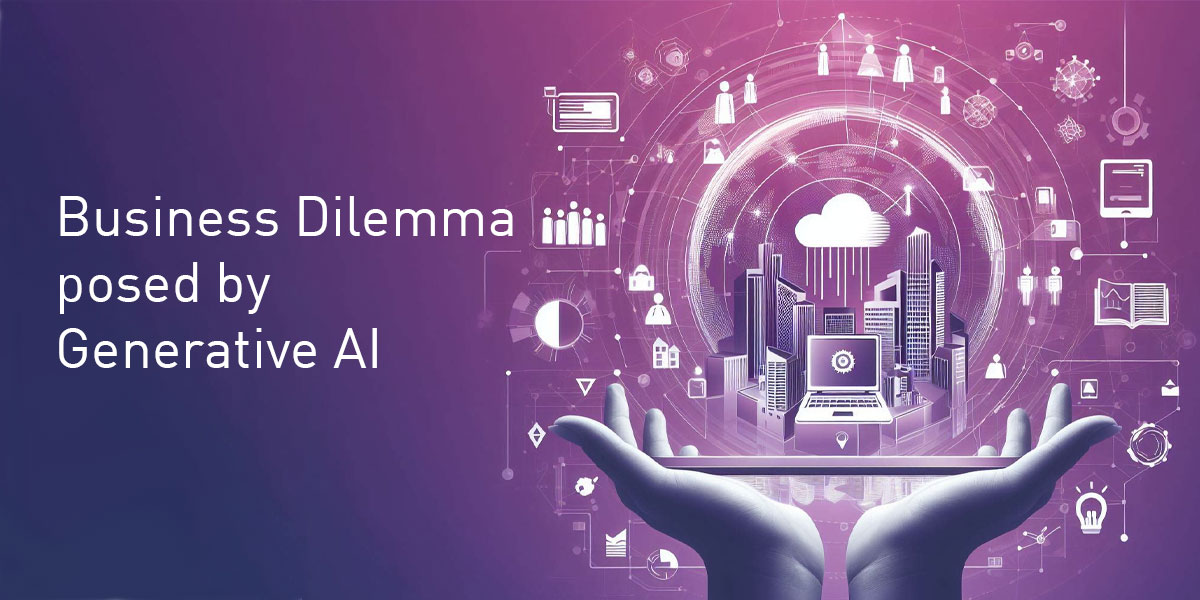Necessary cookies are absolutely essential for the website to function properly. These cookies ensure basic functionalities and security features of the website, anonymously.

The Complexities of Large Language Models
As we advance further into the era of Artificial Intelligence (AI), Large Language Models (LLMs) such as OpenAI’s ChatGPT, Google’s LaMDA and Hugging Face’s BLOOM, have become game-changers, significantly altering how businesses and consumers interact with digital ecosystems. These models serve as mechanisms that utilise neural networks to perform tasks with increasing complexity and versatility. But how do they operate? And what caveats do they bring?
This blog will dive into the technical workings of LLMs, the challenges they present and any ethical considerations we might have.
How LLMs Work: The Technical Blueprint
At the nucleus of an LLM lies its ability to predict the next word in a sequence using a specialised form of neural network architecture called a transformer. These transformer-based models are configured with an enormous array of parameters – mostly in the billions – that are fine-tuned during the training phase to generate accurate predictions. Given the computational complexity, the training regimens of these models often necessitate the power of dedicated supercomputers or expansive cloud computing clusters.
Self Building
Beyond the initial architecture determined by human engineers, these LLMs have an intriguing capability to ‘self-organise’: they dynamically form synaptic connections, referred to as ‘weights’ in machine-learning practice, between artificial neurons during the training process. This self-organising characteristic allows the models to refine and optimise these weights, adopting autonomously to the complexities of the human language.
The Recent Surge of LLM platforms
The recent surge in open-source LLM platforms, spearheaded by Meta’s launch of Llama (and OpenAI’s ChatGPT before that) has democratised access to this technology. Now, smaller players can tweak and adapt models for specific use cases. This has given birth to specialised sub-models, like Google’s PaLM 2 which, while having a massive 3.6 trillion-token vocabulary, is engineered to run more efficiently, consuming fewer computational resources, than its rivals.
Prompt Engineering: Crafting Intelligent Queries
As LLMs proliferate, the art and science of ‘prompt engineering’ have come to the forefront. This emerging field involves crafting the prompts or queries fed into an LLM to elicit highly specific and accurate responses, a skill that’s becoming increasingly indispensable in both tech-savvy and business-oriented roles.
The Quality and Ethical Implications
LLMs have been described as “data-hungry beasts”, requiring an enormous amount of diverse data sets for training. They often ingest data from multiple sources ranging from Wikipedia to user-generated content on forums. However, the expression “junk in, junk out” that you may have come across at the start of your machine learning journey is also highly pertinent here. Models trained on low-quality or biassed data tend to generate flawed or skewed outputs.
Amplification of Societal Biases
LLMs can inadvertently perpetuate and even amplify biases present in their training data. This presents a host of ethical dilemmas, especially when these models are applied in critical decision-making areas like recruitment, judicial assessments or policy decisions.
Integration Challenges
Integrating LLMs into high-stakes industries like healthcare and finance brings forth a slew of issues around intellectual property, data security and user confidentiality. The future likely holds an era of ‘augmented’ LLMs, enriched with the ability to tap into external databases and API services to augment their knowledge and decision-making capabilities.
Humans Staying in the Loop
Even with the formidable predictive capabilities of LLMs, they are not infallible. Reinforcement Learning on Human Feedback methodologies are increasingly being employed to fine-tune these models. Human expertise serves as the ultimate check, providing iterative feedback to steer the model towards ethically sound and factual outputs.
Conclusion: An Evolving Landscape
The ascent of large language models marks a pivotal moment in the evolution of artificial intelligence development. Their increasing specialisation and accuracy underscore the critical need for a deep understanding of their capabilities and inherent limitations. As we navigate the fast-paced changes in technology, staying informed is our best tool. Being knowledgeable helps us use these new technologies effectively to improve our lives, while also reducing the risks that come with them.






